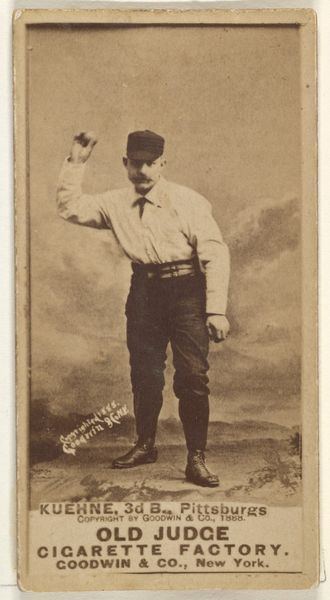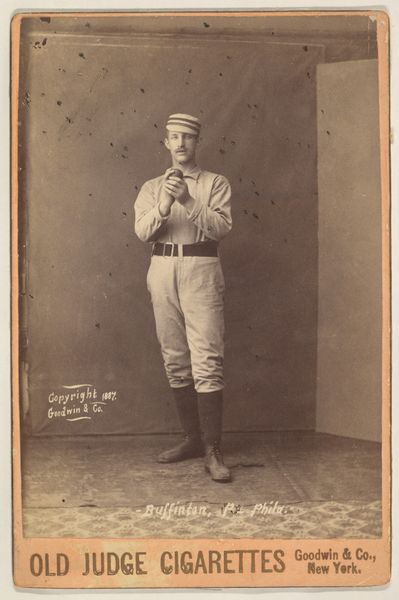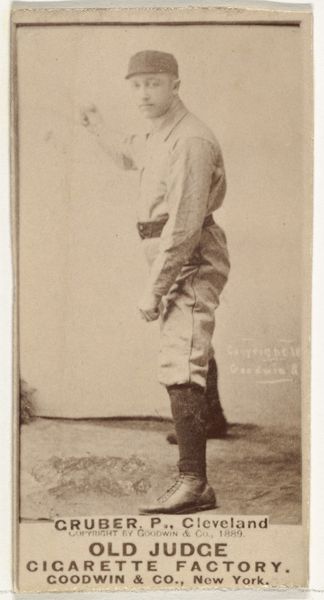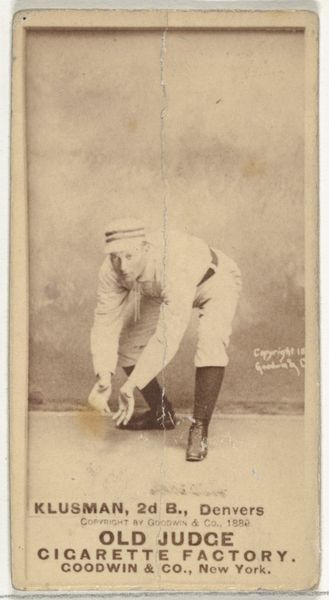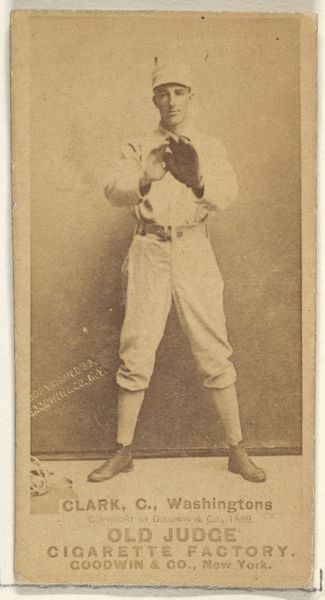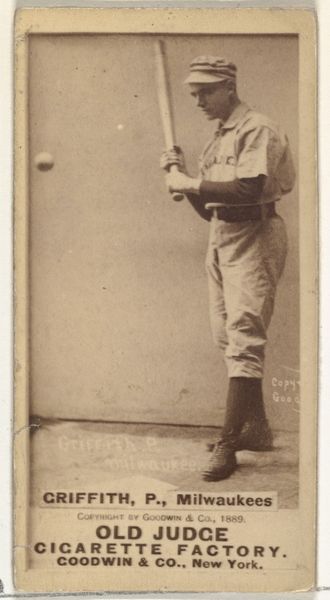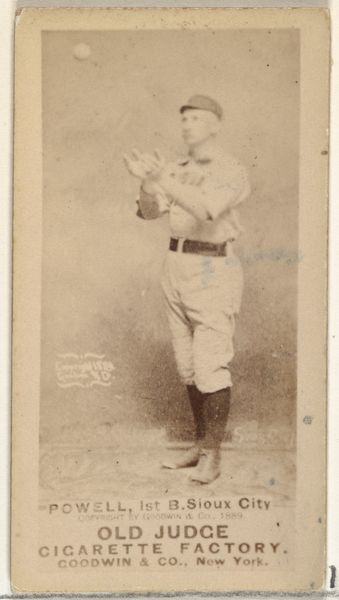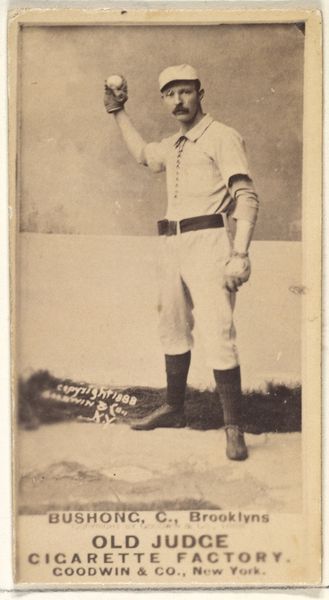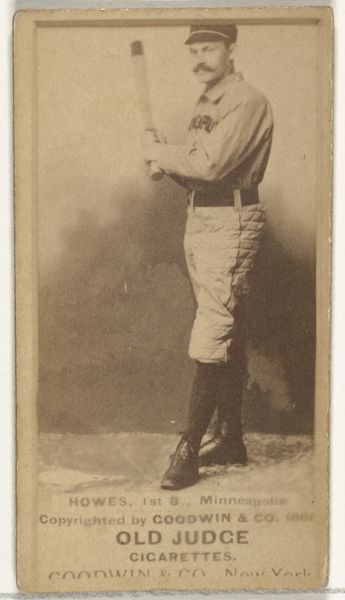
Duke Jantzen, Catcher, Minneapolis, from the Old Judge series (N172) for Old Judge Cigarettes 1889
0:00
0:00
drawing, print, photography, albumen-print
#
portrait
#
drawing
# print
#
impressionism
#
baseball
#
photography
#
men
#
athlete
#
albumen-print
Dimensions: sheet: 2 11/16 x 1 3/8 in. (6.9 x 3.5 cm)
Copyright: Public Domain
Curator: Here we have an albumen print dating to 1889. It’s from a series of baseball player trading cards produced by Goodwin & Company, called "Duke Jantzen, Catcher, Minneapolis, from the Old Judge series (N172) for Old Judge Cigarettes." Editor: It's visually striking. The sepia tones lend a sense of timelessness and gravity to what would otherwise be a simple portrait. The way he’s posed—almost crouched, ready for action—suggests both strength and vulnerability. Curator: Note the compositional elements: the centered figure, the careful balancing of light and shadow, the subject's slightly asymmetrical pose—all contribute to a sense of dynamic stillness. Jantzen becomes an icon not of movement, but of potential energy, of a coiled spring ready to unleash. Editor: That "coiled spring" also evokes the social pressures bearing down on athletes during this period. We need to recognize how images like these functioned within a larger capitalist framework, where sports figures became commodities to promote cigarette sales. What does it mean to represent an athlete of the working class during this era of industrialization? Curator: Undoubtedly the print operated within the confines of consumer culture, it can't be ignored that the nuances in lighting create volume, further accentuating the formal geometry of Jantzen’s uniform, highlighting a tactile presence. There's a kind of purity to this focus on form that resists commodification to some degree, making it a stand-alone work of art rather than mere advertising. Editor: I disagree with this ideal of "pure form," especially in mass-produced capitalist propaganda. But if you observe the rigid lettering at the bottom and contrast this with the dynamic pose, an athlete of working-class origins and modest upbringing has to make peace with the demands and requirements of capital and performance, for his advancement and integration in American society. Curator: Fair enough. The typography, in its stark clarity, provides a structural counterpoint to the nuanced portrayal of Jantzen. But for me, the piece as a whole transcends the particulars of its context, becoming a meditation on form, light, and the human figure. Editor: And for me, it remains firmly entrenched in the social realities of its time, speaking volumes about labor, commerce, and the construction of celebrity. Curator: Ultimately, it seems we both find something of value in its composition. Editor: Yes, though our interpretations radically diverge. It seems fitting for an object created at such a dynamic period in American history.
Comments
No comments
Be the first to comment and join the conversation on the ultimate creative platform.

